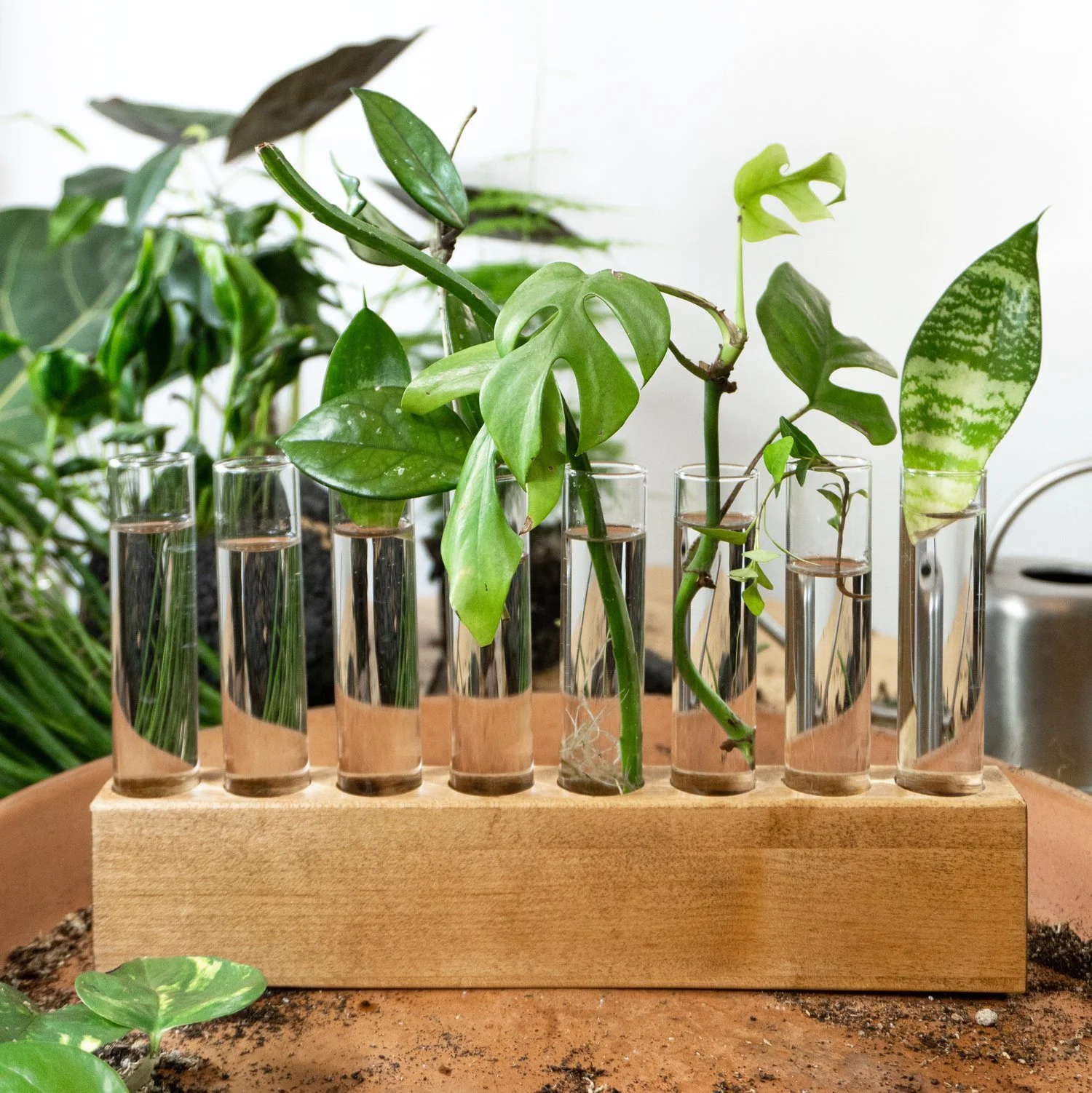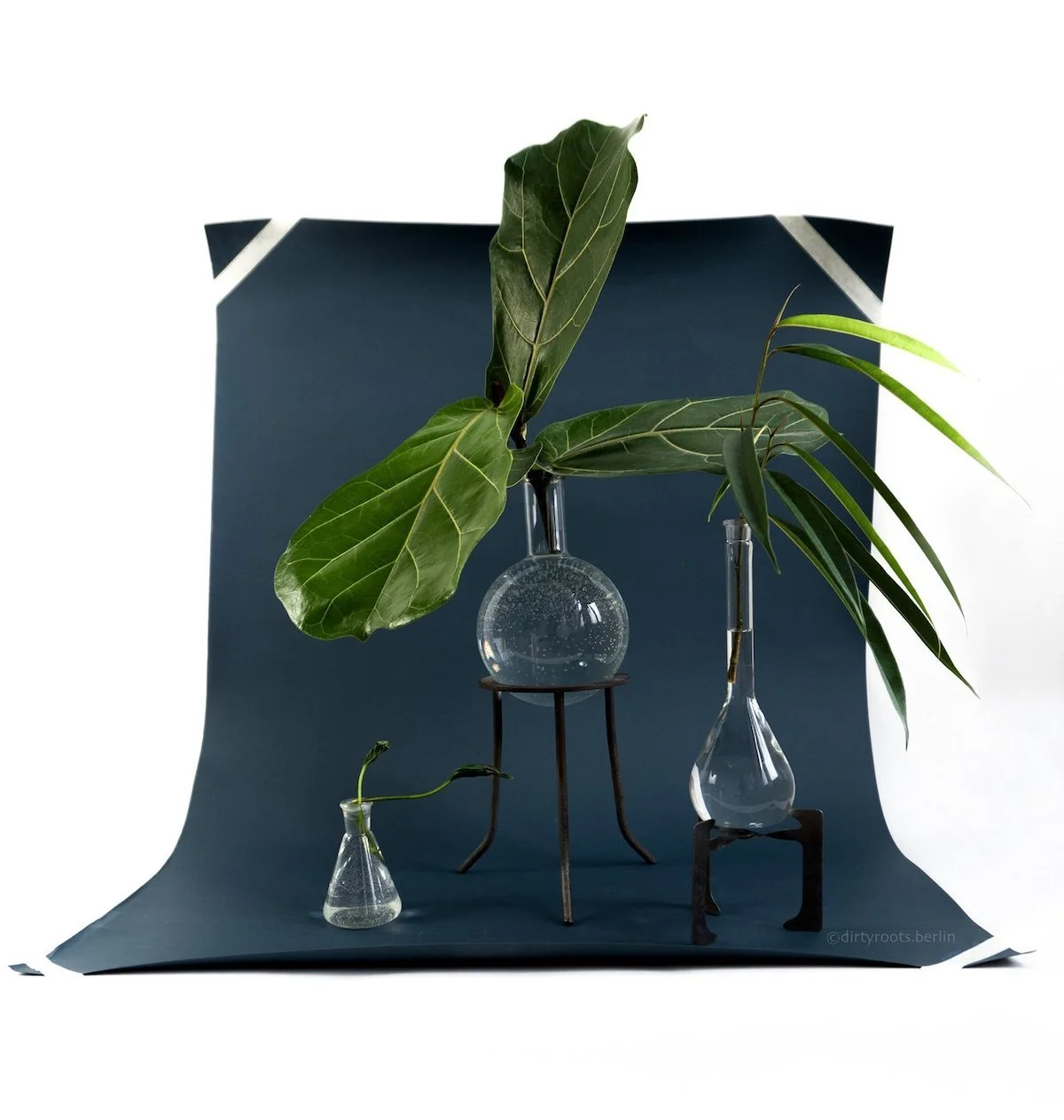Growing Plants in Water
What is Water Culture?
Have you heard of water culture? Also known as growing plants in water. It is about as easy as it sounds. Many, dare I say most common houseplants can be grown in water long term. The easiest method is to take a cutting from a larger “Mother” plant and root that in water. Once you put it in the water, you simply never take it out.
Why to Grow Plants in Water
While it is true that I am a fan of microbe-rich soil, I also really love the look and ease of growing plants in water. I love how you get to watch the roots grow and form. I always have a handful of plants growing permanently in water alongside plenty of propagations.
Different types of Water Culture
Water culture is a simple catch-all term for growing plants in water. This included hydroponics, aquaponics, water propagation, and more. I get a lot of questions about how I grow plants in water. What nutrients do I use, how often do I change the water, and what kind of water am I using?
How Hard is it to Grow Plants in Water?
It’s all quite simple. Growing plants in water is often easier than growing in soil but there are a few key tips that should help you grow your own indoor water garden and maintain it with great success.
Taking Big Cuttings
If you want it big, start it big! One thing to keep in mind when growing plants in water is that they tend to grow a lot slower than their soil counterparts. This is often due to lower quantities of nutrients found in the water vs. what a typical potted plant would encounter. There are things you can do to speed up the process, but to be honest, I don’t do any of them.
Myths about Potting Soil
You might be saying to yourself “We’ll hey there, I don’t use any nutrients or fertilizer on my house plants” and you might not. But more often than not the plants we buy at the store already contain slow-release fertilizer in the soil. And that fresh bag of potting mix… usually has it too.
Of course, if you keep your plants in the same container for years on end and never fertilize you might notice the gradual slowing of growth and attribute this to a case of a rootbound plant. Bumping it to a larger container will give your plant a growth boost. But it’s more likely due to the fresh nutrients, and not the extra pot size (there are more nuances to this than I make it sound but I think you get the point.)
But back to the topic at hand. Since plants in water often lack large amounts of nutrients (unless added in the form of liquid fertilizer or perhaps fish tank water which is full of water-soluble nutrients) they often grow quite slowly. This is why I say “If you want big, start big.” Monstera deliciosa can be a great plant for this as it is fairly easy to root even very large cuttings from this monster of a plant. I usually have at least one of them growing in water at all times. They look great, and they put out large visually stunning roots.
How to Transition from Soil to Water
Don’t! Start in water – Stay in water. While it is possible to transition many plants from soil to water culture it’s usually a lot more work, and a lot less successful. One of the easiest ways to grow plants in water is to start them in water. What I mean by this is to take a cutting from the plant you wish to grow in water rather than attempt to remove every last drop of dirt from the roots (something you’ll want to do if you are going from soil to water.) And remember to take a large cutting if you want a large plant.
What kind of Water for Growing Plants in Water?
When it comes to what kind of water to use, for the most part, tap water is just fine. Most of the plants that can grow in water can handle the amount of chlorine and other chemicals present in many tap waters. I must confess I live in Berlin Germany where the tap water is untreated groundwater and therefore contains no added chemicals. But I grew plants in water for many years while living in the states and never once did I use any water other than what came from the tap. Whether I lived in New York City or Lincoln Nebraska, tap was, and is all I use.
I am sure there are some exception plants that can grow only in water, so long as it is well filtered, but honestly, I don’t waste my time. I save my filtered water for my sensitive soil plants.
Should I add Nutrients to My Water Culture Plants?
I don’t add any nutrients to the water. I have been known in the past to experiment with allowing my plants to sit in a bucket of compost extract. (a process where you extract water-soluble nutrients as well as microbes from compost making a sort of nutrient tea. This is similar though different from what is known as ‘compost tea’) By allowing the plant to soak in the nutrient extract for a few hours or so it had access to nutrients that were otherwise unavailable or in lower quantities in tap water. While I have noticed some benefits from doing this, it has not been so great for me to make this a standard practice. In fact these days, I will only do it if I have the extract sitting around and I happen to be changing out the water for the plants. And even then I don’t always do it.
How Often Should I Change the Water for My Plants?
Speaking of changing water, this is something you will have to do from time to time but not as often as some would have you think. I have heard some people claim that you need to change the water every day, or every week. Some of my water culture plants only get a partial water change every few months. I find changing the water daily to be excessive and invites more possibility of causing harm or damage. Unless your container is really really small (in which case I would suggest you get a larger container if you plan to grow your plant in water long-term) changing the water every day often does way more harm than good. I tend to wait until the water starts to get a bit dirty. What does that mean exactly and how long does that take? Well, that depends on so many different factors. But as a general rule, the larger the container, the longer you can go without changing the water.
But that’s it. I mean really. That’s all you need to start killing it growing plants in water. That and a little patience perhaps. So what are you still doing here? Go grab some clean shears and your favorite vase and get to it!
Looking for more tips on plant growing?
Here's my ultimate plant care guide LEAVE IT THE FUCK ALONE!







